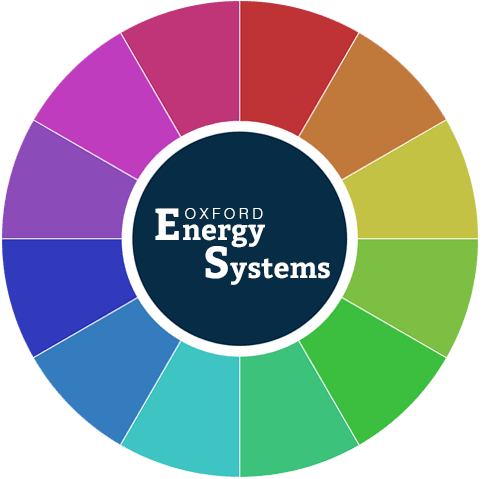The work of clean, affordable, and secure energy solutions research at OXGATE
The Oxford Green Ammonia TEchnology (OXGATE) research group is a collaboration between Chemistry and Engineering Science at the University of Oxford. Thegroup is led by Professor SC Edman Tsang (Chemistry) and Professor René Bañares-Alcántara (Engineering). Our work includes catalyst development, prototyping, process design, and energy systems modelling related to green hydrogen and ammonia.
The group collaborates at the world’s first roundtrip ‘green’ ammonia pilot plant which was commissioned in June 2018 at the Rutherford Appleton Laboratory in Oxfordshire as a £1.5M collaboration, funded by Innovate UK, between Siemens, the University of Oxford, STFC, and Cardiff University
In the OXGATE Research group, we are researching green hydrogen and ammonia as feedstocks and fuels for our future. Green hydrogen and ammonia are the two carbon-free ‘green fuels’ that can be produced from renewable electricity, air, and water (including desalinated sea water). The relevant technologies are well understood but are not currently economically competitive and have only recently, with substantial reductions in renewable energy production, been shown to be potentially economically attractive. These two carbon-free fuels are substantially more energy-dense than batteries, and thus serve a different portfolio of energy applications, including seasonal energy storage, mediating overseas green energy trade, and decarbonising heavy-duty transport, such as shipping.
In the Systems Engineering group, our research group develops techno-economic models for green ammonia production, incorporating real renewable energy profiles and optimising the process unit sizes. Reliable modelling of green ammonia production is important for estimating accurate present and future levelised cost of ammonia (LCOA). The implications of LCOA projections are similar in effect to the forecasts of oil prices –the LCOA can affect numerous cross-sector systems, from shipping to power production to agriculture. We model production in both the UK and many global locations. In recent research, we are integrating our green ammonia production models into energy systems models to understand the role of green hydrogen and ammonia in complex and changing energy networks, such as for seasonal energy storage. Our focus has been developing countries, in the work of doctoral student Zac Cesaro, as one of the most significant challenges in moving towards a global zero-net carbon future is establishing secure and substantial energy infrastructures in developing countries to meet a growing demand without involving traditional carbon-intensive pathways, such as coal. We believe this technology would be game-changing in developing
countries, as it addresses the energy trilemma of clean, affordable, and secure energy.
In the Chemistry group, our research is on both fundamental and applied aspects in Novel Solid State Materials and Heterogeneous Catalysis. We design, prepare, characterise and test new nano-materials for green hydrogen and ammonia synthesis via Haber-Bosch as well as electro- and photo-catalytic synthesis. We focus on developing and demonstrating catalysts that are both affordable and have high performance at lower temperatures and pressures, which is preferred for smaller scale green ammonia synthesis processes that match the scale of renewable resources. We are collaborating on the Shipping THRUST Project to assess potential technology pathways for decarbonising the shipping industry, as green ammonia is one of the most promising carbon-free fuels for shipping.
If you are interested in contacting the group to discuss collaborating please visit www.oxfordgreenammonia.uk
By Zac Cesaro, doctoral student in Engineering Science, University of Oxford.

